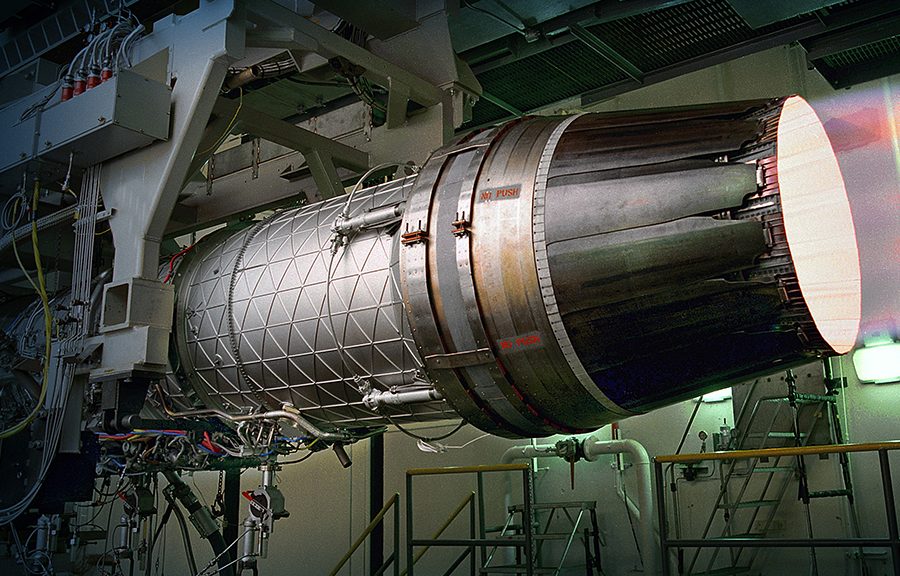RTX’s Pratt & Whitney received contracts valued at more than $1.2 billion to sustain the F100 fighter engine, according to Pentagon contract announcements made Nov. 12 that were delayed by the federal government shutdown.
The main contract, worth $1.1 billion, is for F100 engine “consumable and depot-level repairable parts and program management services,” and runs through the end of September 2030. The award was made Sept. 29, at the close of the fiscal year.
The F100 powers older-model F-15s and F-16s in Air Force service, as well as many in foreign service. The F100 was the first engine to power the F-15, and later the F-16; GE Aerospace (previously General Electric) was brought in as a second source for USAF fighter engines in 1984 and the two types competed for the lion’s share of production for years in what was known at the time as “The Great Engine War.” The last F100 for the Air Force, the F100-PW-229, was delivered in the early 2000s.
The Air Force is divesting its F-15C/D and older F-15E fleet, which fly the F100, but will keep hundreds of F-16s in the inventory well into the 2030s.
The F100 contract is a firm-fixed price type with “prospective redetermination,” which a Pratt spokesperson said is a “type of contract … [that] allows for the parties to redetermine the price at a future period of time.”
Although the Air Force has indicated it is moving away from F100-powered fighters and focusing on those powered by the GE Aerospace F110 series, the Pratt spokesperson said the five-year sole-source contract does not indicate the F100 is being phased out.
“This is not a close-out contract,” they said. “The F100 engine is in production and flying regularly. In partnership with our customers, Pratt & Whitney continues to prioritize readiness, reliability, and performance.”
Pratt protested the selection of the GE F110 as sole source to power the new-production F-15EX Eagle II, but the Air Force, after a competition, opted to stick with the F110.
Pratt also received two other contracts—one for $51.8 million and another for $50.1 million—for five years’ worth of production of F100 hot section modules; also to be completed by the end of September 2029. The contracts include no options. Both contracts were of a firm-fixed-price delivery order type “against a five-year basic order agreement.”
Asked why it got two nearly-identical orders for hot section modules instead of one, the Pratt spokesperson said the Defense Logistics Agency “issues procurement requests. We respond as the requests are received.”


